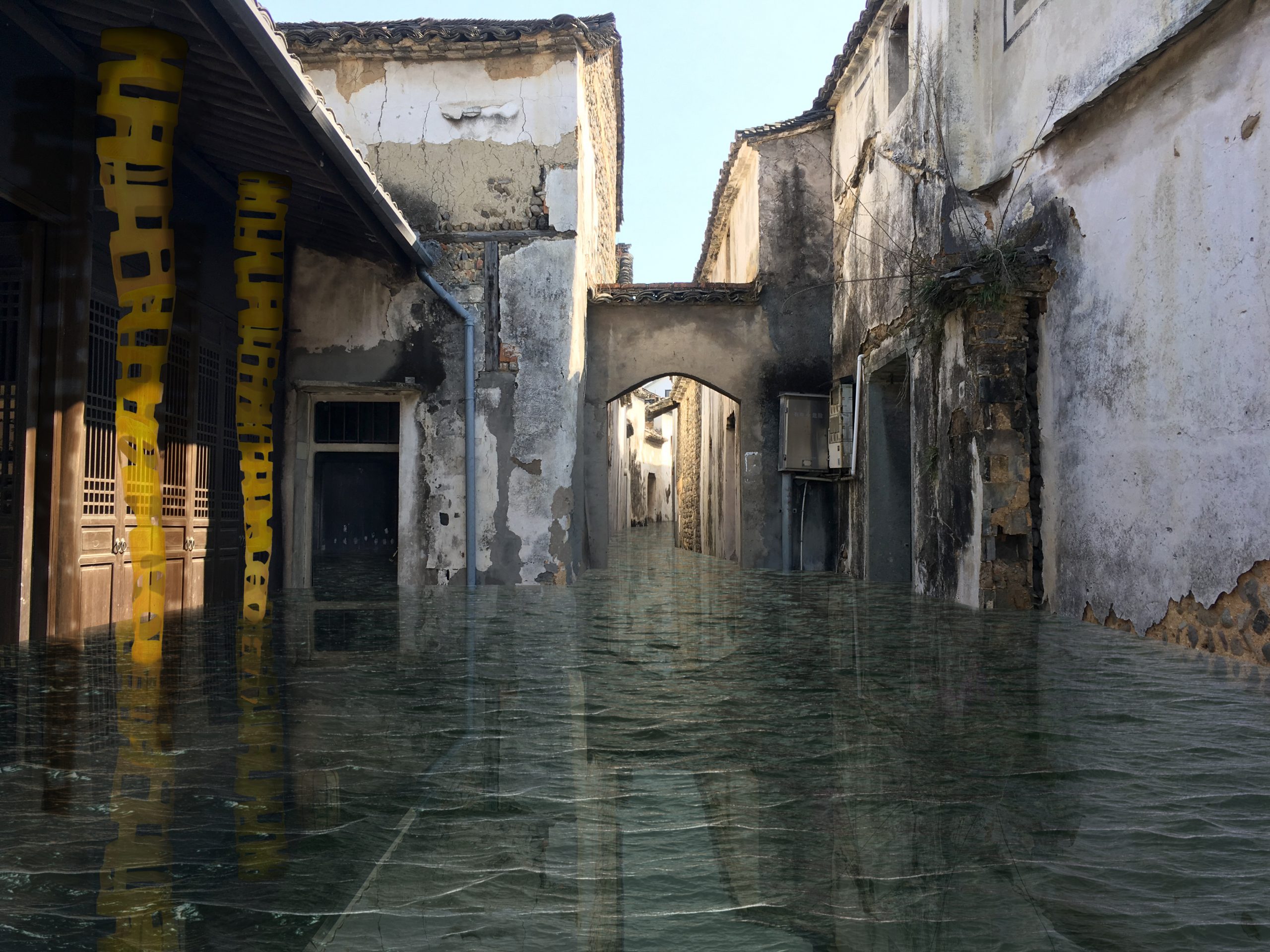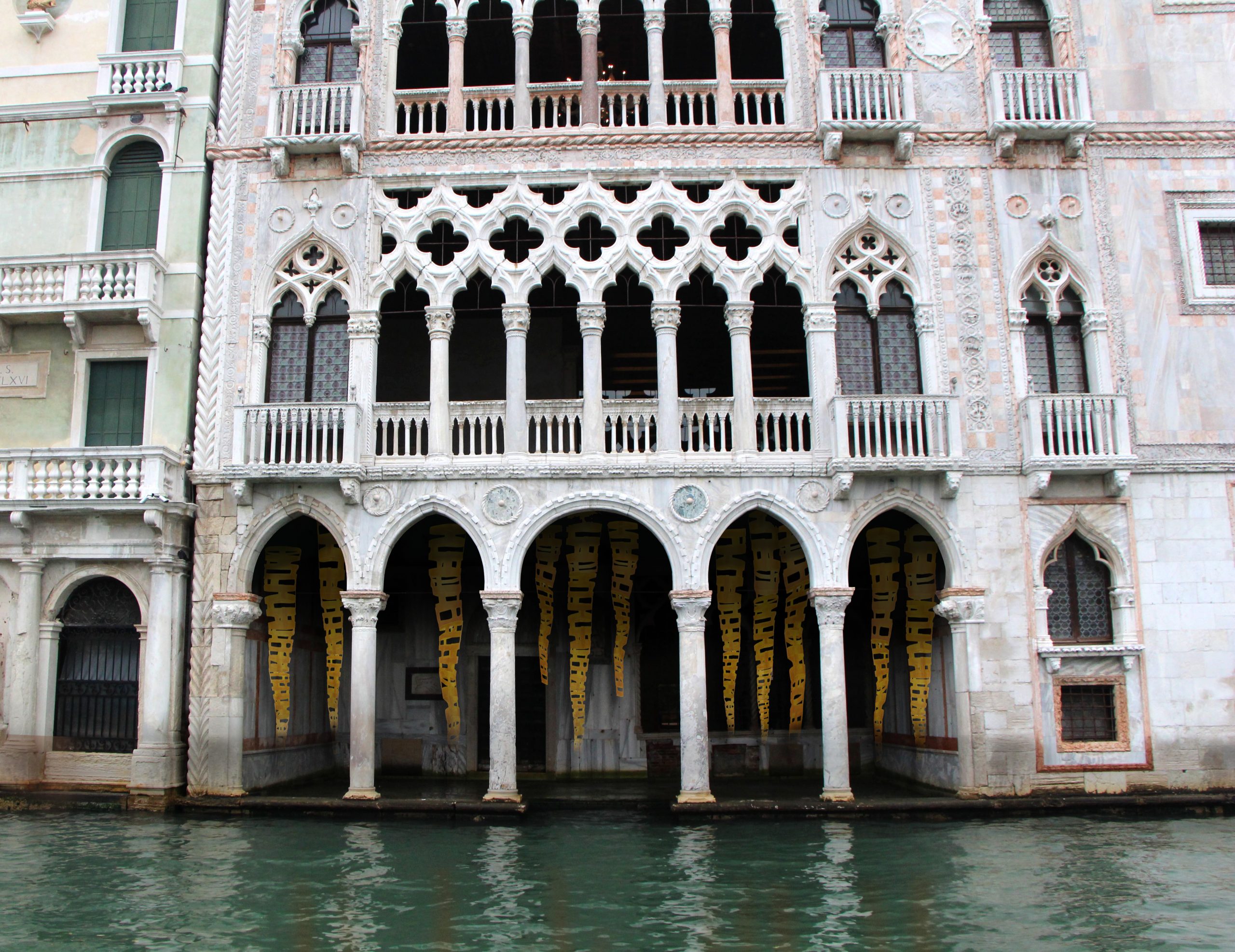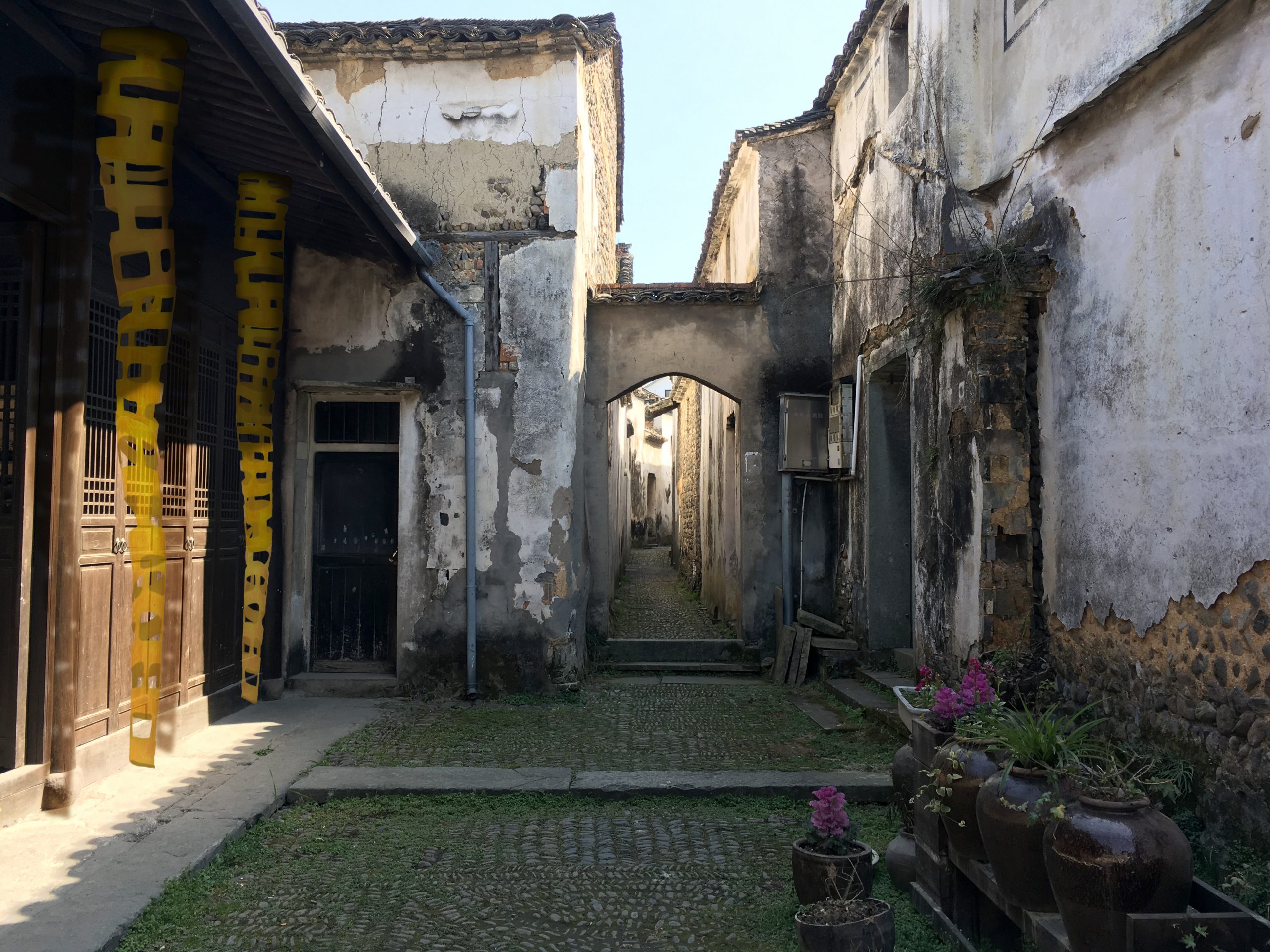
Yeadon Space Agency has created a new means to record water levels, while commemorating disastrous flood events. The high water mark is embodied and presented in “Biostalactites” that are made to readily dissolve in water, whether saltwater or freshwater, as water levels rise. The project is one of many YSA projects that make use of new bioplastic composites that we’ve been developing.
For a number of years, we’ve been developing a range of bioplastics for a variety of applications, including soft robotics. It’s well known that some bioplastics aren’t easily recycled and don’t readily biodegrade. Therefore, we’ve tended to focus on creating bioplastics that readily biodegrade, where water can be used as a solvent.
The biostalactites grew out of our thinking about applications for the bioplastics. It’s another example of our materials-driven approach to innovation, which has led to a number of other ephemeral applications for the bioplastics, including: urns for burials at sea, temporary trail markers that contain nutrients for soil, and devices that dissolve in water.

The biostalactites appear yellow in the prototype and images shown above, because turmeric was added to the clear bioplastics as a means to color the material and make the biostalactites more apparent. Two different bioplastic polymers were explored for this project: pullulan and hypromellose (HPMC), doped with yellow turmeric, brown coffee waste, and/or red beets for coloring.
Project Team: Laura Rodriguez & Peter Yeadon


